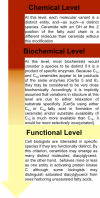Many ceramides
- PMID: 21693702
- PMCID: PMC3151029
- DOI: 10.1074/jbc.R111.254359
Many ceramides
Abstract
Intensive research over the past 2 decades has implicated ceramide in the regulation of several cell responses. However, emerging evidence points to dramatic complexities in ceramide metabolism and structure that defy the prevailing unifying hypothesis on ceramide function that is based on the understanding of ceramide as a single entity. Here, we develop the concept that "ceramide" constitutes a family of closely related molecules, subject to metabolism by >28 enzymes and with >200 structurally distinct mammalian ceramides distinguished by specific structural modifications. These ceramides are synthesized in a combinatorial fashion with distinct enzymes responsible for the specific modifications. These multiple pathways of ceramide generation led to the hypothesis that individual ceramide molecular species are regulated by specific biochemical pathways in distinct subcellular compartments and execute distinct functions. In this minireview, we describe the "many ceramides" paradigm, along with the rationale, supporting evidence, and implications for our understanding of bioactive sphingolipids and approaches for unraveling these pathways.
Figures




References
-
- Hannun Y. A., Obeid L. M. (2008) Nat. Rev. Mol. Cell Biol. 9, 139–150 - PubMed
-
- Merrill A. H., Jr., Wang M. D., Park M., Sullards M. C. (2007) Trends Biochem. Sci 32, 457–468 - PubMed
-
- Pettus B. J., Kitatani K., Chalfant C. E., Taha T. A., Kawamori T., Bielawski J., Obeid L. M., Hannun Y. A. (2005) Mol. Pharmacol. 68, 330–335 - PubMed
Publication types
MeSH terms
Substances
Grants and funding
LinkOut - more resources
Full Text Sources
Other Literature Sources
Miscellaneous

